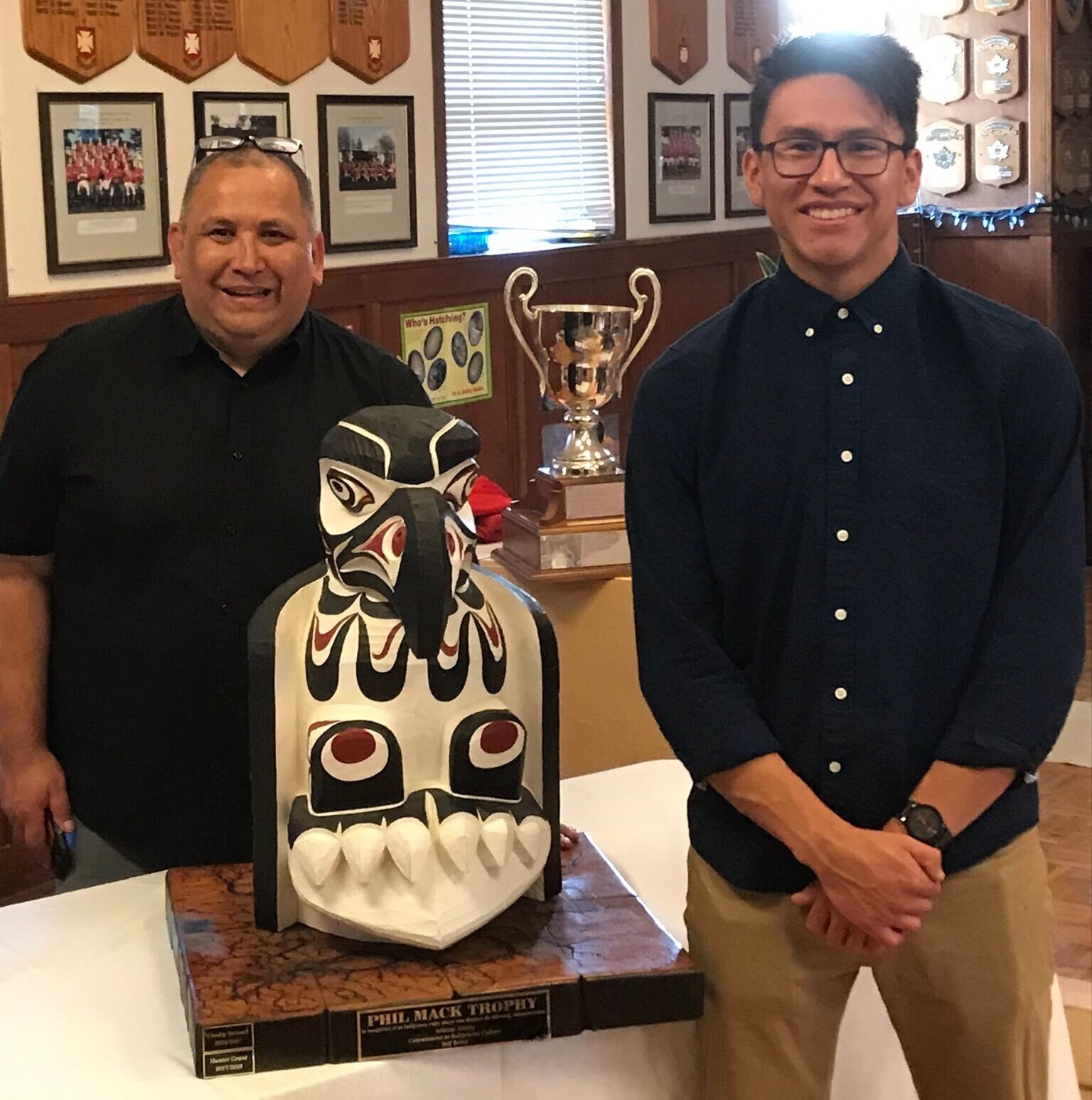During the Virtual Awards Gala, we had John Lyall, head of Thunder Rugby, at the clubhouse to present the Phil Mack Indigenous Youth Player of the Year Award to Caleb Sam of the Songhees Nation. Also present were Phil and Nancy Meyer to share their passion behind the award and to give Sam the $1,000 scholarship the Meyer's sponsor.
Background: Origin of the Phil Mack Trophy
More than a hundred years ago, a cedar tree began its life on Nuu-chah-nulthlands on the west coast of Vancouver Island. In 2015, this cedar, now standing straight and tall, was taken to become a totem pole. Crafted by master First Nations carver Tommy Hunt, it stands in Shq’aphut, the Aboriginal Gathering Place at Vancouver Island University near Nanaimo. The top of this mighty tree was saved – put aside to be transformed to altered cultural form.
Phil Mack is a member of the Toquaht Nation, located near Ucluelet, also within Nuu-chah-nulth lands. Phil and Nancy Meyer had enjoyed Phil’s exciting on-field rugby play for more than a decade – initially at James Bay Athletic Association, later, when he attended the University of Victoria, and now playing for Canada. Off-field, we watched Phil grow into an impressive man. So, in 2016, Tom Hunt was commissioned to transform the topmost tip of this Nuu-chah-nulth tree into an Eagle – to become the feature of the Phil Mack Trophy.
Many helped in the creation of the Phil Mack Eagle: John Lyall, leader of The Thunder First Nations Rugby team, and President of the Vancouver Island Rugby Union; Tom Woods, John de Goede and Barry Robbins all at JBAA; John James of Cowichan RFC; and Mark Bryant of BC Rugby News.
The Eagle stands in the Songhees Wellness Center, offering a powerful message of opportunity that may be possible through rugby to young First Nations kids passing through.
Because we are “sportsmen”, we describe this Eagle as a “Trophy” - to be awarded each year to an outstanding First Nations rugby athlete.
More broadly, from its origin in Nuu-chah-nulth soil – transformed by expert carver’s hands – now celebrating Phil’s accomplishments on and off the field, this Eagle better seems a Traditional Cultural Property – shared by its creators; by Nuu-chah-nulth, Songhees, Esquimalt, and other First Nations peoples who may draw hope and inspiration – and by the rest of us who love our rugby game.


